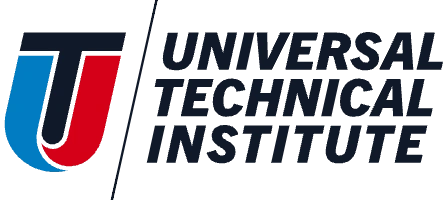Table of Contents
- What are the Advantages of Solar Energy and Wind Energy?
- Disadvantages of Solar and Wind Energy
Harvesting solar and wind energy has been around for decades.
If you’re interested in the energy industry, it’s important to understand the different types of energy resources, what their advantages are and why these resources are essential to everyday life. It could also be beneficial to take wind technology courses such as Wind Turbine Operation at Universal Technical Institute (UTI) to gain the knowledge and skills need to prepare for a career.1
Learn more about solar vs. wind, which energy source is better, and what goes into maintaining and installing energy-producing machinery.
What are the Advantages of Solar Energy and Wind Energy?
The biggest advantage of generating electricity through solar and wind systems is that they don’t create air pollution. Solar and wind are also renewable energy sources. That means that it’s not possible to run out or use them up.
Pros of Solar Energy
Solar power is energy from the light or heat from the sun converted into electrical energy. Some pros of solar energy include:
- No emissions: Sourcing energy from solar doesn’t release harmful emissions into the atmosphere, unlike other sources such as coal, oil, and gas.
- Low maintenance: After the installation, solar panels don’t require too much maintenance or servicing.
- Availability: Solar energy is one of the most abundant resources on earth.
Pros of Wind Energy
Wind energy is electrical energy from harvesting the wind using windmills or wind turbines. Some pros of wind energy include:
- Small environmental footprint: Wind energy doesn’t create harmful emissions. It also has a very small impact on land and the communities of species that may be present.
- Simple construction: It doesn’t take too much time to install wind machines compared to other energy-producing machines. Wind also has a fast energy payback.
- Cost effective: The cost of producing electricity through wind has come down over the last couple decades. This makes it one of the most affordable sources of renewable energy.
Read: How Do Wind Turbines Work?
Disadvantages of Solar and Wind Energy
It’s important to note that even with a lot of positives, solar and wind each have their downsides. For example, even if solar energy is abundant, it is not constant due to the positioning of the sun in an area. It is also quite expensive to build a solar farm.
A downside of wind energy is that wind farms are typically located in more remote areas. This causes an issue as there may be a loss of energy as it is being transmitted to communities that need it.
Solar or Wind Energy: Which Renewable Energy is Better?
How can we determine which renewable energy source is more efficient when it comes to wind turbines vs. solar panels?
With all these benefits and disadvantages in mind, wind is still a more efficient power source than solar. This is because wind turbines release fewer emissions, take less energy to function, cost less to build, and produce more energy.
Are you interested in becoming a wind turbine technician? At UTI, we offer a 30-week Wind Turbine Technician program that provides hands-on training to help graduates gain the knowledge and skills needed to pursue a career.
Installation and Maintenance of Solar and Wind Energy Systems
Solar panels are installed on the roofs of buildings or at solar farms. Rooftop solar panels are mounted on the roof and can last 20 to 25 years. The solar panels found at farms can last 30 to 35 years. The maintenance needed for solar panels includes cleaning the PV panels, diagnosing and testing the power production, and checking systems.
The installation of a wind turbine is determined by its size and type. The surrounding area will need to be prepped, a crane may be needed to install the tower and turbine, and the wind turbine system will need to be connected to a grid.
To maintain wind energy systems, wind turbine technicians have duties that include:
- Perform routine wind turbine maintenance, like inspecting components and lubricating parts
- Inspecting the blades for damage
- Climb wind turbine towers to check the gearbox for wear and tear, and clean the nacelle
- Collect data on wind turbine performance
- Tightening bolts and electrical connections
- Replacing components such as turbine blades
The demand for wind technicians is growing—employment is projected to grow 60% from 2023 to 2033.63 In fact, according to the Bureau of Labor Statistics (BLS), wind turbine service technicians are one of the fastest-growing occupations.
Read: How to Become a Wind Turbine Technician
Want to Train to Become a Wind Technician?
UTI’s wind technician program will give you access to state-of-the-industry tools and technology to help you gain the knowledge needed to service wind turbines. Learn from experienced instructors who are excited to help you grow in the skills required to pursue a career in wind!
Want to learn more? Request information to learn more about our Wind Turbine Technician training program, the campuses that offer wind training and how to apply. You can also apply today!
Campuses That Offer Wind Technician Training
Universal Technical Institute of Illinois, Inc. is approved by the Division of Private Business and Vocational Schools of the Illinois Board of Higher Education.



